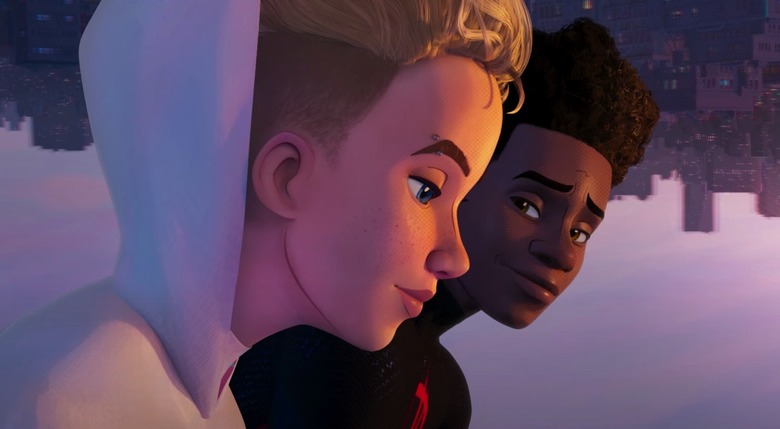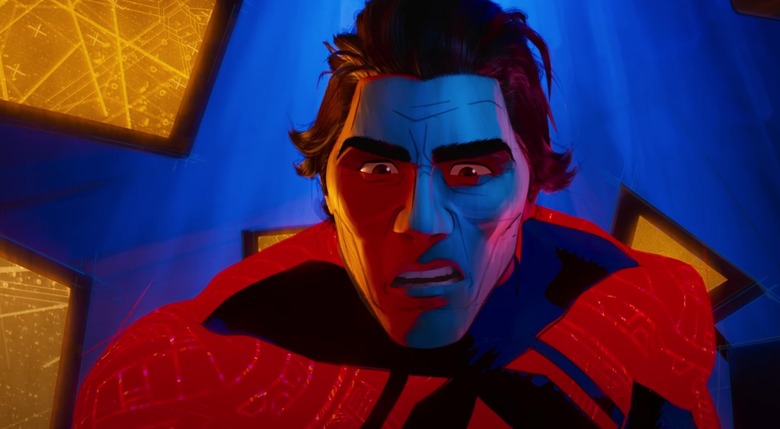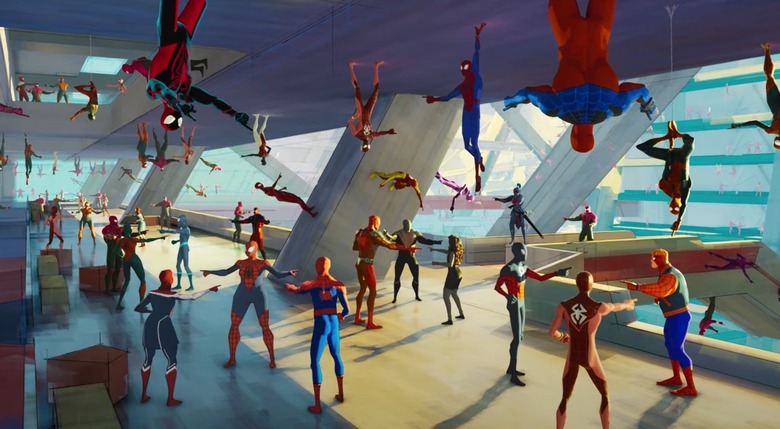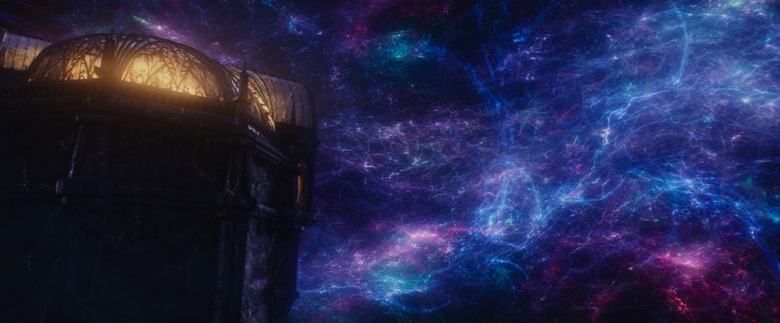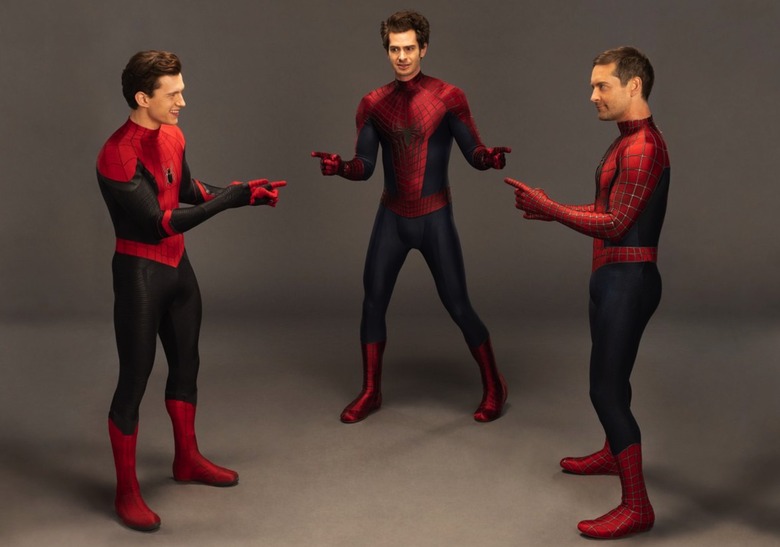I Figured It Out: How Loki Can Connect Spider-Verse 2 To The MCU
Spider-Man: Across the Spider-Verse is a masterpiece that deserves your attention in a theater. The animation, the music, the story, and the actors voicing all these Spider-People are great highlights of the sequel. Spider-Verse 2 is the best Spider-Man movie to date, but I will point out the obvious caveat here: animation lets you do things that aren't possible in a live-action movie. And now that I saw Spider-Verse 2, I can safely say there's a great way to connect the Spider-Verse to the MCU multiverse, and Loki is the key adventure that makes it possible.
Before I explain, I'll warn you that big Spider-Verse 2 spoilers will follow below. Make sure you watch Across the Spider-Verse before you read any further.
Sony’s Spider-Man multiverse in Across the Spider-Verse feels familiar
Many reviewers have mentioned Sony's great take on the Spider-Man multiverse in Across the Spider-Verse, and I agree. I'll also note it's not perfect, but that will be the subject of a different post.
We don't learn everything at once, but it's usually Miguel O'Hara/Spider-Man 2099 (Oscar Isaac) delivering the explanations. And that's important because his information might not be objective. Like labeling the MCU's Earth-616 as Earth-199999 early in the movie. He might be wrong, and that's the first thing we have to consider.
I'll also remind you that Loki labels the MCU's primary reality as Earth-616. But that's the TVA's name for this particular timeline. Other realities might have their own systems to catalog all the different timelines out there. It's not like all the different timelines got together to agree upon one universal set of names for each reality.
Miguel appears early in the story to help Spider-Woman (Hailee Steinfeld) capture a version of the Vulture. It's there that he tells her the actions in Into the Spider-Verse were not enough to save the multiverse. She, Miles Morales (Shameik Moore), and the other Spider-People left a hole in the multiverse big enough for guys like the Vulture to appear in the wrong dimensions.
A good save for the SSU
Sony calls different universes "dimensions," which is also an important difference from Marvel's MCU. Miguel's explanation also fixes Sony's terrible choice for the Morbius credits scene.
As a reminder, the MCU's Vulture (Micheal Keaton) got stuck in Morbius' (Jared Leto) reality. The spell Doctor Strange (Benedict Cumberbatch) used at the end of No Way Home wouldn't have produced that outcome.
Getting back to the Spider-Verse 2 explanations, Miguel tells Gwen that he's putting everyone back where they belong before time and space collapse.
That's a theme we've seen in the MCU. Messing with alternate timelines can lead to incursions, which can destroy an entire reality.
It turns out that Miguel caused such a cataclysmic event when he took the place of a variant of his who died. That replacement destroyed that entire reality.
Spider-Verse or polimultiverse?
Later in the movie, we learn that the Spider Society oversees the "arachno-humanoid polimultiverse" (aka Spider-Verse) and ensures that canon events stay in place.
That polimultiverse term is key here. It explains why the Spider-Verse and MCU multiverse coexist and interact despite being different multiverses. And it explains why we see Tobey Maguire and Andrew Garfield in flashback scenes around canon events.
Canon events are specific events that have to happen in the lives of Spider-People. Like the death of Uncle Ben. Or the death of a police captain saving a child under the eyes of Spider-Man.
Mess with them, and you risk destroying the fabric of that reality. Eliminate enough canon events, and you could end up destroying the multiverse. Or the polimultiverse.
We have a similar concept in the What If...? animated series in episode 4. That's easily one of the highlights of season 1, introducing us to a Doctor Strange version that does everything he can to save Christine Palmer (Rachel McAdams).
It turns out he can't modify that moment in time. That's an "absolute point" in the timeline that can't be destroyed. But we haven't had that many absolute points in the MCU multiverse. Or we haven't realized their importance.
In the final act of Spider-Verse 2, we learn that Miles Morales was the original anomaly. He was never supposed to become Spider-Man. His failure in Into the Spider-Verse caused the current multiverse problems that Miguel is looking to fix.
How Loki can connect the MCU multiverse to the Spider-Verse 2
When I first heard Miguel's Earth-199999 line in a Spider-Verse 2 trailer, I worried Sony might ruin the MCU multiverse.
Then, one of the film's co-directors said we're looking at two separate multiverses. That saddened me, as I wanted the characters in the Spider-Verse to possibly appear in the MCU down the road.
But even before seeing Across the Spider-Verse, I realized that Loki is the potential solution to my problem. Now that I have seen the sequel, I'm positive it can be used to connect the Spider-Verse to the MCU multiverse.
Scenario #1
Sony used similar visuals as Loki to show the multiverse, a nod that everything could be interconnected. And it had a ton of Easter eggs that tie Spider-Verse 2 to all of Sony's live-action Spider-Man movies. Thanks to No Way Home, those live-action movies are connected.
These Easter eggs could merely beclever nods to previous films that fans will appreciate. But they could be used as hooks for future crossovers.
Getting back to Loki, the simplest explanation for tying the Spider-Verse to the MCU multiverse concerns the Sacred Timeline. We can speculate that He Who Remains isolated it from the rest of the multiverse. As if it were in a bubble. An aquarium holding a number of limited parallel universes.
This plays well with Miguel's "polimultiverse" remark. And his Earth-199999 designation. He might have mislabeled that reality once it came under his radar.
The second explanation is more complex, and it's not perfect. But it's easier to understand than the time-travel science in Tenet.
Scenario #2
When "He Who Remains" won the multiverse wars, this particular version of Kang could have manifested control over the entire multiverse. The Sacred Timeline could feature different realities that Kang prevented from leaving their trajectories.
That is, he set in motion events in a certain way for each of those realities with the help of a massive TVA organization. That way, each timeline would continue to exist without the risk of them intersecting. And Kang would simply destroy any timelines he didn't need.
Now, when Sylvie (Sophia Di Martino) killed He Who Remains, the multiverse expanded immediately and furiously. Branches emerged in the past, present, and future of the MCU. In every timeline. Including Miles Morales' timeline. Let's remember that the actions in the final Loki episode happen outside of the flow of time. So they're contemporary with every event in the MCU multiverse and the Spider-Verse.
Kang's death might have set in motion a chain of events that made the action in Into the Spider-Verse possible. Miles Morales became Spider-Man because there was no TVA to prevent this anomaly.
So what about the Spider-Society?
As I speculated recently, the Spider-Society is pretty much a parallel organization of the TVA. Miguel is Kang, and the Spider-People are the agents.
There's a way to explain the organization. I presented two scenarios above. In the first case, where the MCU multiverse was held in a bubble, the Spider-Society exists at the same time as the TVA. They're not aware of each other as long as Kang is alive.
In the second scenario, the Spider-Society might also be the result of the death of He Who Remains. Miguel is living in a high-tech advanced reality that acts as the Spider Society's base. Maybe he formed it once Kang relinquished control over the Sacred Timeline. Without being aware of the Kang threat or knowing the TVA exists.
Keep in mind that many Spider-People are scientists like Kang. Some of them might have had similar visions about the multiverse and the need for oversight. And that's how you get a Spider Society that wants to be better than the TVA. But in reality, it's really the same sort of organization.
All of this is speculation coming from someone who wants to see the Spider-Verse 2 characters team up with the MCU Avengers down the road. But I will say that the Spider-Verse works great without the need for Avengers crossovers, and that's all on Sony.
